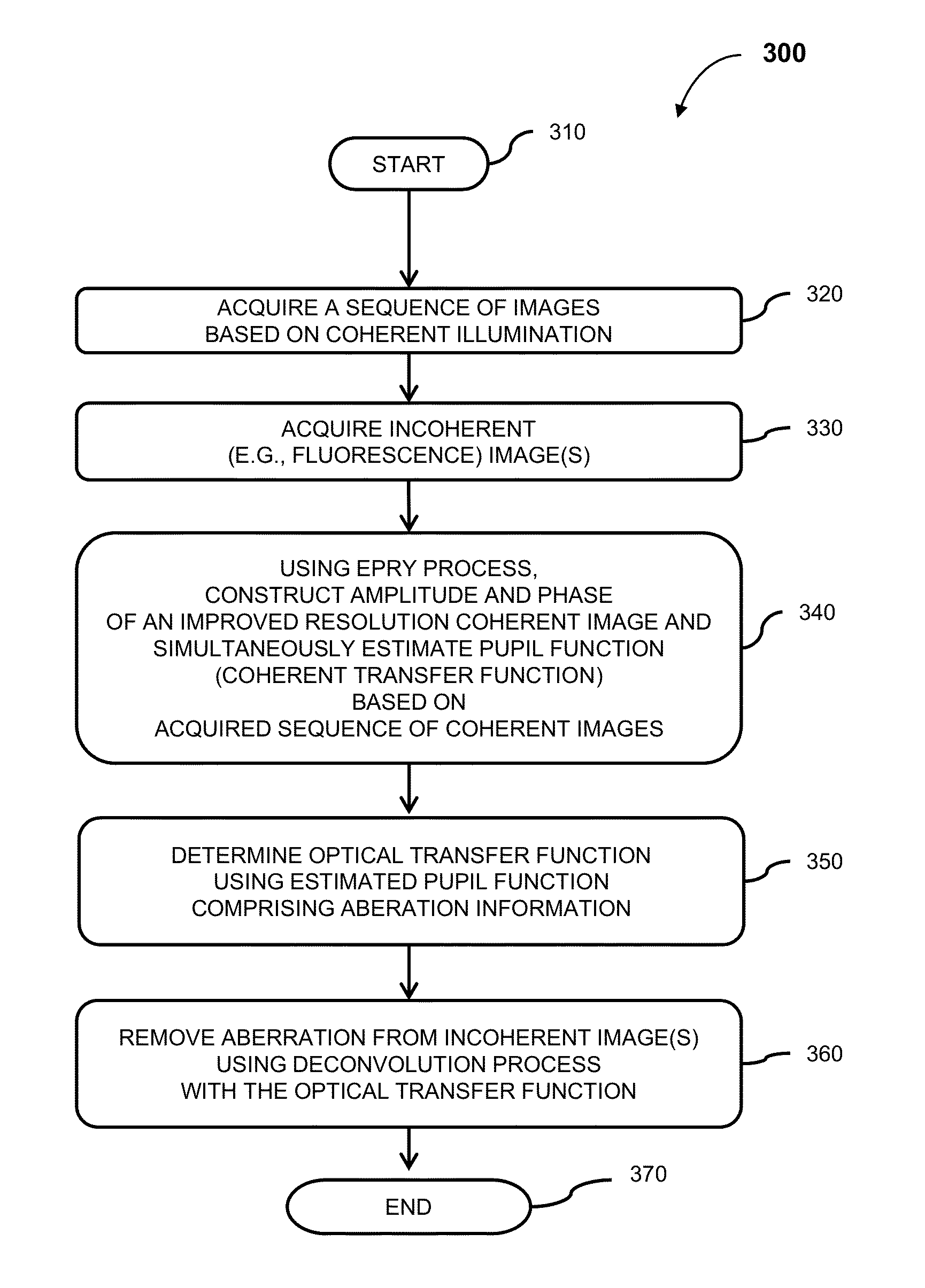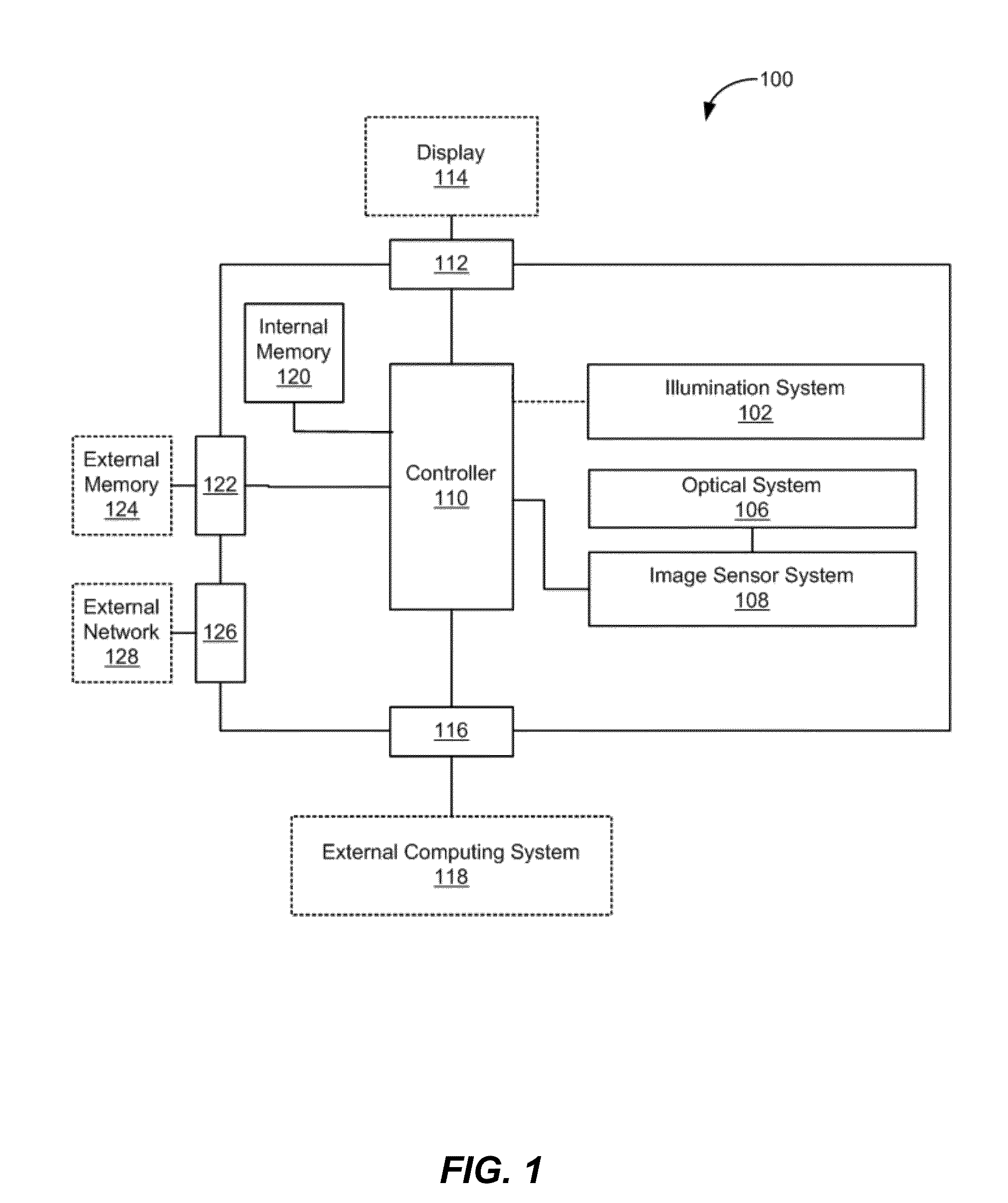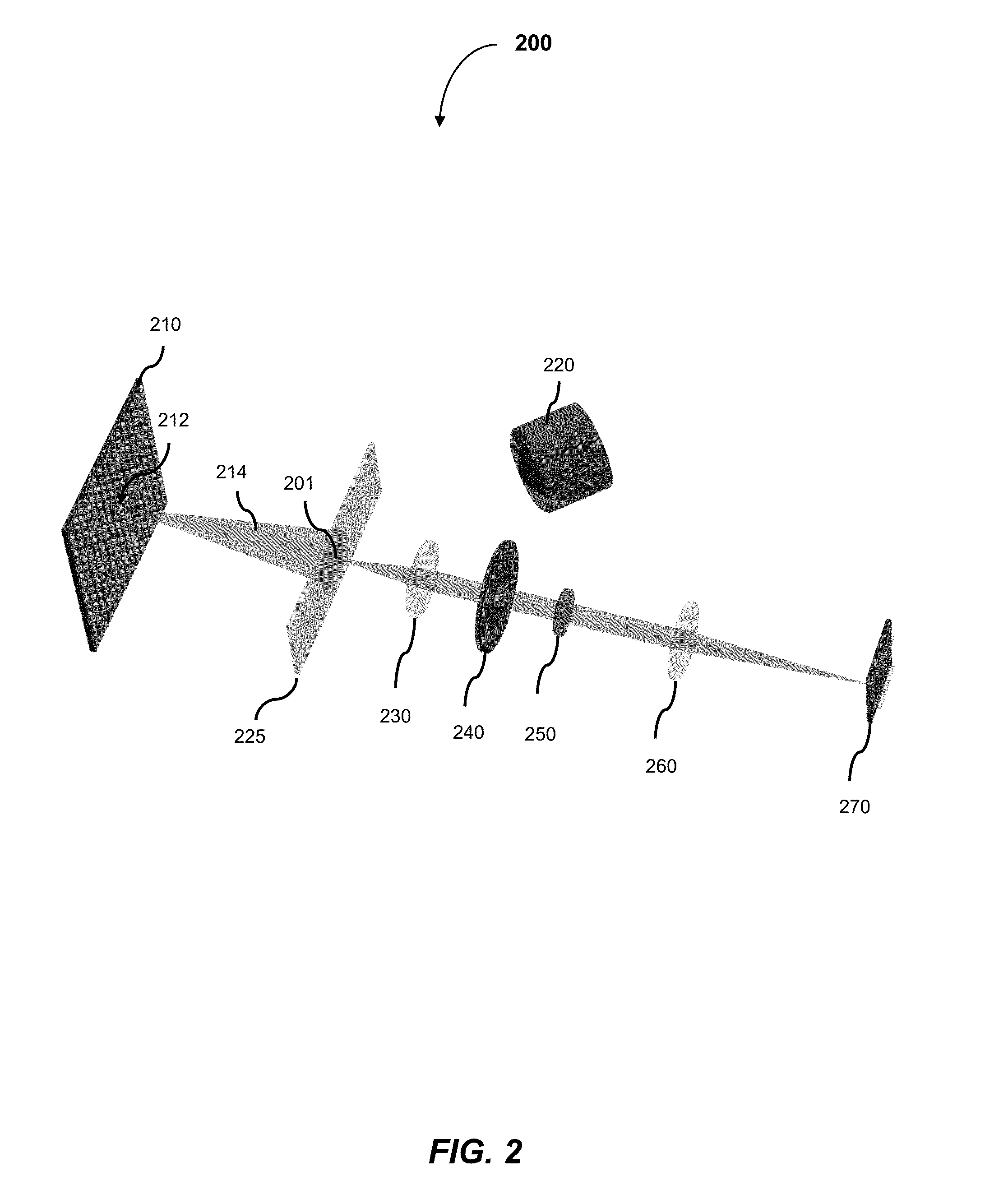Correcting for aberrations in incoherent imaging systems using fourier ptychographic techniques
- Summary
- Abstract
- Description
- Claims
- Application Information
AI Technical Summary
Benefits of technology
Problems solved by technology
Method used
Image
Examples
Embodiment Construction
[0021]Embodiments of the present disclosure will be described below with reference to the accompanying drawings.
I. INTRODUCTION
[0022]Recently, an embedded pupil function recovery (EPRY) method was developed in junction with Fourier ptychographic (FP) techniques. The standard EPRY method characterizes a lens' spatially varying aberration and corrects captured images computationally for a coherent imaging setup. Details of this standard EPRY method can be found in G. Zheng, R. Horstmeyer and C. Yang, “Wide-field, high-resolution Fourier ptychographic microscopy,” Nature Photonics, 2013, in X. Ou, G. Zheng and C. Yang, “Embedded pupil function recovery for Fourier ptychographic microscopy,” Optics Express, 2014, which are both hereby incorporated by reference in their entirety. Details of this EPRY method can also be found in U.S. patent application Ser. No. 14 / 572,493 titled “EMBEDDED PUPIL FUNCTION RECOVERY FOR FOURIER PTYCHOGRAPHIC IMAGING DEVICES” and filed on Dec. 16, 2014, which ...
PUM
 Login to view more
Login to view more Abstract
Description
Claims
Application Information
 Login to view more
Login to view more - R&D Engineer
- R&D Manager
- IP Professional
- Industry Leading Data Capabilities
- Powerful AI technology
- Patent DNA Extraction
Browse by: Latest US Patents, China's latest patents, Technical Efficacy Thesaurus, Application Domain, Technology Topic.
© 2024 PatSnap. All rights reserved.Legal|Privacy policy|Modern Slavery Act Transparency Statement|Sitemap



